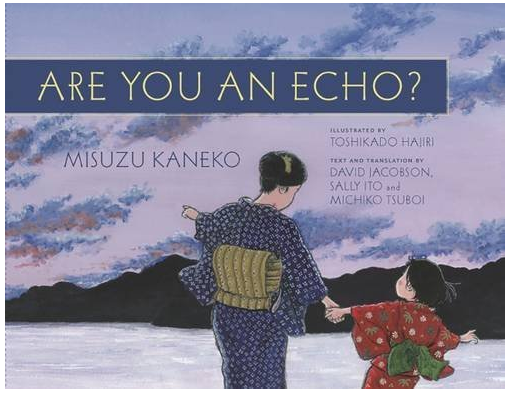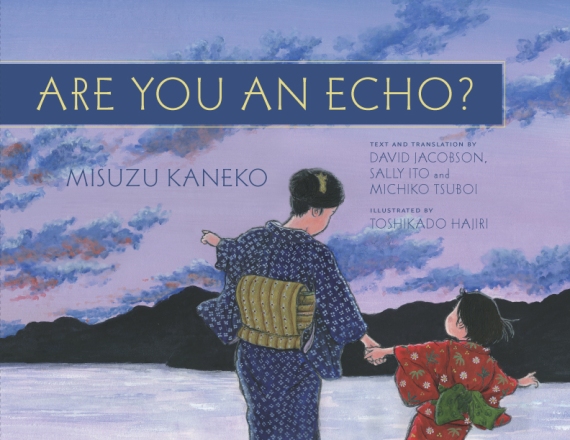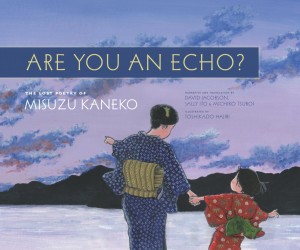 The Society of Children’s Book Writers and Illustrators presents
The Society of Children’s Book Writers and Illustrators presents
The Creative Collaboration Behind Are You An Echo? The Lost Poetry of Misuzu Kaneko
with author David Jacobson, co-translator Michiko Tsuboi and illustrator Toshikado Hajiri
followed by
SCBWI Japan Showcase of New Works
with authors Michael Currinder, Suzanne Kamata, Trevor Kew, Leza Lowitz and Holly Thompson, author-illustrators Keiko Kasza and Izumi Tanaka, and translator Ginny Tapley Takemori
Date: Saturday, February 4, 2016
Time: Presentation 1-2:30 p.m. | Showcase 2:45-4:30 p.m.
Place: Tokyo Women’s Plaza, Audiovisual Rooms A & B, 5-53-67 Jingumae, Shibuya-ku, Tokyo (by the United Nations University; map)
RSVP: Reserve by sending an email to japan (at) scbwi.org
Full Details: See the SCBWI Japan event page
* * * * * * * * * * *
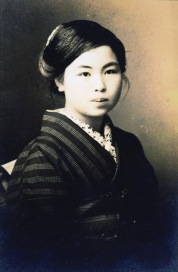 The Creative Collaboration Behind Are You An Echo? The Lost Poetry of Misuzu Kaneko (1-2:30 p.m.)
The Creative Collaboration Behind Are You An Echo? The Lost Poetry of Misuzu Kaneko (1-2:30 p.m.)
Join three of the creators of the stunning picture book published by Chin Music Press about the life and poetry of Misuzu Kaneko. David Jacobson will share about his role in crafting the biographical text and the forming of the book’s creative team. Michiko Tsuboi will address challenges faced in translating the seemingly simple poems of Misuzu Kaneko and her collaborative process with co-translator Sally Ito. Toshikado Hajiri will discuss his research, process, approach and technique in creating the many detailed illustrations for the book. There will be plenty of time for Q&A. Please feel free to bring your pre-purchased books for signing; please note that books will not be available for purchase at this event.
 David Jacobson is a longtime journalist and writer with a specialty in Japan. He has a BA in East Asian Studies from Yale University and was awarded a Mombusho scholarship to study at Tokyo’s Hitotsubashi University. While a journalist in print and broadcast media, his news articles and TV scripts appeared in the Associated Press, The Washington Post, The Seattle Times, The Japan Times, and on NHK and CNN. Since joining Chin Music Press in 2008, David has edited or copyedited titles including Yokohama Yankee, The Sun Gods and Why Ghosts Appear. Are You an Echo? The Lost Poetry of Misuzu Kaneko is his first book. He lives in Seattle, Washington.
David Jacobson is a longtime journalist and writer with a specialty in Japan. He has a BA in East Asian Studies from Yale University and was awarded a Mombusho scholarship to study at Tokyo’s Hitotsubashi University. While a journalist in print and broadcast media, his news articles and TV scripts appeared in the Associated Press, The Washington Post, The Seattle Times, The Japan Times, and on NHK and CNN. Since joining Chin Music Press in 2008, David has edited or copyedited titles including Yokohama Yankee, The Sun Gods and Why Ghosts Appear. Are You an Echo? The Lost Poetry of Misuzu Kaneko is his first book. He lives in Seattle, Washington.
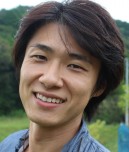 Toshikado Hajiri is a graphic artist and illustrator in Tokushima, Japan. After graduating from Ritsumeikan University in international relations and working at a trading company, in 2009 he decided to pursue his love for painting full-time. His work has appeared in school textbooks, advertisements, calendars, and in 12 children’s picture books. He was awarded 2nd prize in the 2006 International Illustration Competition sponsored by the Japan Illustrators’ Association, and his work was selected for inclusion in the illustrator’s gallery of the 2016 Asia Festival of Children’s Content. Are You an Echo? The Lost Poetry of Misuzu Kaneko is his first book for
Toshikado Hajiri is a graphic artist and illustrator in Tokushima, Japan. After graduating from Ritsumeikan University in international relations and working at a trading company, in 2009 he decided to pursue his love for painting full-time. His work has appeared in school textbooks, advertisements, calendars, and in 12 children’s picture books. He was awarded 2nd prize in the 2006 International Illustration Competition sponsored by the Japan Illustrators’ Association, and his work was selected for inclusion in the illustrator’s gallery of the 2016 Asia Festival of Children’s Content. Are You an Echo? The Lost Poetry of Misuzu Kaneko is his first book for 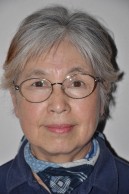 international publication. For a gallery of his work, visit hajiritoshikado.com.
international publication. For a gallery of his work, visit hajiritoshikado.com.
Michiko Tsuboi lives in Shiga, Japan. She majored in English literature in Doshisha Women’s College and has studied Canadian literature in Edmonton, Canada. She taught English at a high school and still teaches it at her home. Are You an Echo: The Lost Poetry of Misuzu Kaneko is her first published book of translation.
* * * * * * * * * * *
SCBWI Japan Showcase of New Works (2:45-4:30 p.m.)

Join us for the SCBWI Japan Showcase 2017! SCBWI Japan member authors, illustrators and translators will present their recent or forthcoming children’s and YA books to the public in brief, lively presentations. Authors and illustrators will share excerpts, ideas that inspired the work, creative process, techniques, curriculum tie-ins, related activities, and more. Speed Q&A will follow the presentations.
Michael Currinder grew up in St. Louis, Missouri, and ran cross-country and track at the University of North Carolina-Chapel Hill. Running Full Tilt is his first novel and is a fusion of his collective experiences as a talented high school runner and his close, yet complicated, relationship with his older autistic sibling. Mike has been an international educator for close to two decades, having lived in China, Taiwan, and the Philippines. He and his wife are now on year nine in Tokyo with their rescue dog, Leo.
Suzanne Kamata is the author of four novels including the award-winning Gadget Girl: The Art of Being Invisible, Screaming Divas, which was named to the ALA Rainbow List, and The Mermaids of Lake Michigan, which was a finalist for the Helen Sheehan YA Book Prize. Her short fiction and poetry for young readers have appeared in YARN, Ladybug, Cricket, Cicada, and the anthology Tomo. She serves as Publicity Assistant for SCBWI Japan, and teaches EFL and Creative Writing at Tokushima University. www.suzannekamata.com
Keiko Kasza was born on an island in the Inland Sea of Japan. She moved to the U.S. in 1973 and graduated with a B.A. in graphic arts from California State University at Northridge. Her first picture book was published in 1981 in Japan, and she continued to publish in her native language. The Wolf’s Chicken Stew, a 1987 ALA notable book and the winner of the 1989 Kentucky Bluegrass Award, was her first work published in the U.S. She has now published 21 picture books. Keiko Kasza currently lives in Tokyo, but she is planning to return to her home in the U.S. in a few years. www.keikokasza.com
Trevor Kew hails from the small mountain town of Rossland, BC, in Canada. He is the author of six children’s novels including Trading Goals, Playing Favourites, and Run for Your Life, which was published in January 2017. He also contributed a story to the young adult anthology Tomo in 2012. Trevor teaches MYP and IBDP English at Yokohama International School. He is fast closing in on his first decade of living in Japan and definitely will write about Japan one day. http://trevorkew.com
Leza Lowitz is a poet, fiction writer and memoirist. Her work has appeared in the New York Times, the Huffington Post, Shambhala Sun and others. She has published over 20 books, including Yoga Poems: Lines to Unfold By, Jet Black and the Ninja Wind (Winner of the APALA Award), her memoir Here Comes the Sun, and Up From the Sea, her first verse novel for young adults. Other awards include the PEN Josephine Miles Award, a PEN Syndicated Fiction Award, NEA and NEH grants, and the Japan-U.S. Friendship Commission Prize for the translation of Japanese Literature. She also runs Sun and Moon Yoga studio in Tokyo. www.lezalowitz.com
Ginny Tapley Takemori is a British translator based in rural Ibaraki, Japan, who has translated fiction by more than a dozen early modern and contemporary Japanese writers. She studied Japanese at the universities of SOAS (London) and Waseda (Tokyo) and earned her MA in Advanced Japanese Studies from The University of Sheffield. Two of her translations for young people are published by Pushkin Children’s Books: The Whale That Fell In Love With a Submarine, a short story collection by Akiyuki Nosaka, and The Secret of the Blue Glass by Tomiko Inui.
Izumi Tanaka was born in Kumamoto and grew up in Nagasaki. She loved to walk in the mountains during her childhood and still does now. After studying Japanese traditional gouache painting for several years, she began writing picture books. In 2005, she self-published her first picture book No no Hana no yōni (Like Wildflowers), a story set in Mongolia. In March 2017, her second book, Mame-chan no Bōken (Mame-chan’s Adventure) will be released as an e-book. http://izumi-picturebooks.jimdo.com
Holly Thompson is a longtime resident of Japan and author of the verse novels Falling into the Dragon’s Mouth, The Language Inside and Orchards; picture books The Wakame Gatherers and the forthcoming Twilight Chant; the novel Ash; and other works. A graduate of the NYU Creative Writing Program, she writes poetry, fiction and nonfiction for children, teens, and adults, and teaches creative writing in Japan, the U.S., and places in between. www.hatbooks.com


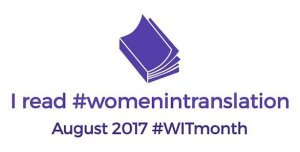



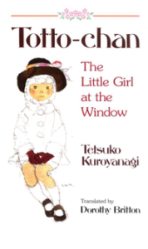



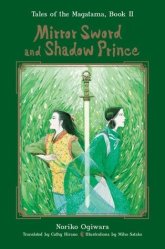




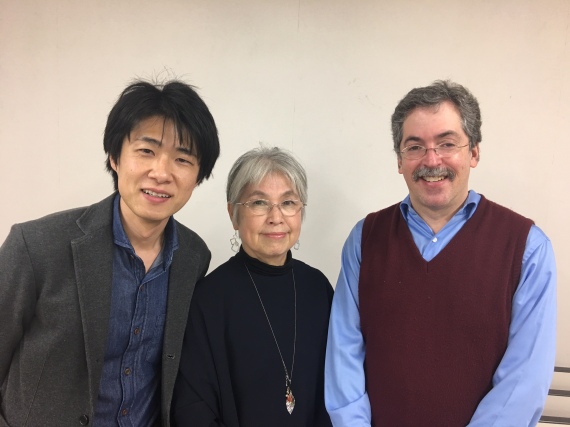

 David Jacobson is a longtime journalist and writer with a specialty in Japan. He has a BA in East Asian Studies from Yale University and was awarded a Mombusho scholarship to study at Tokyo’s Hitotsubashi University. While a journalist in print and broadcast media, his news articles and TV scripts appeared in the Associated Press, The Washington Post, The Seattle Times, The Japan Times, and on NHK and CNN. Since joining Chin Music Press in 2008, David has edited or copyedited titles including Yokohama Yankee, The Sun Gods and Why Ghosts Appear. Are You an Echo? The Lost Poetry of Misuzu Kaneko is his first book. He lives in Seattle, Washington.
David Jacobson is a longtime journalist and writer with a specialty in Japan. He has a BA in East Asian Studies from Yale University and was awarded a Mombusho scholarship to study at Tokyo’s Hitotsubashi University. While a journalist in print and broadcast media, his news articles and TV scripts appeared in the Associated Press, The Washington Post, The Seattle Times, The Japan Times, and on NHK and CNN. Since joining Chin Music Press in 2008, David has edited or copyedited titles including Yokohama Yankee, The Sun Gods and Why Ghosts Appear. Are You an Echo? The Lost Poetry of Misuzu Kaneko is his first book. He lives in Seattle, Washington. Toshikado Hajiri is a graphic artist and illustrator in Tokushima, Japan. After graduating from Ritsumeikan University in international relations and working at a trading company, in 2009 he decided to pursue his love for painting full-time. His work has appeared in school textbooks, advertisements, calendars, and in 12 children’s picture books. He was awarded 2nd prize in the 2006 International Illustration Competition sponsored by the Japan Illustrators’ Association, and his work was selected for inclusion in the illustrator’s gallery of the 2016 Asia Festival of Children’s Content. Are You an Echo? The Lost Poetry of Misuzu Kaneko is his first book for
Toshikado Hajiri is a graphic artist and illustrator in Tokushima, Japan. After graduating from Ritsumeikan University in international relations and working at a trading company, in 2009 he decided to pursue his love for painting full-time. His work has appeared in school textbooks, advertisements, calendars, and in 12 children’s picture books. He was awarded 2nd prize in the 2006 International Illustration Competition sponsored by the Japan Illustrators’ Association, and his work was selected for inclusion in the illustrator’s gallery of the 2016 Asia Festival of Children’s Content. Are You an Echo? The Lost Poetry of Misuzu Kaneko is his first book for  international publication. For a gallery of his work, visit
international publication. For a gallery of his work, visit 
